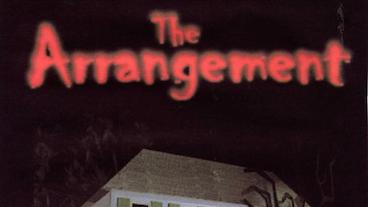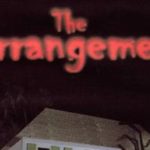
The Arrangement
Usually, I come away from a game with a clear idea of how much I would recommend it, but this game tears me in both directions every time I look at it
Introduction
Usually, I come away from a game with a clear idea of how much I would recommend it, but this game tears me in both directions every time I look at it. My overall conflict stems from it having been made by an independent developer, which I greatly respect and want to promote, but the game is significantly flawed and not one which I would normally recommend. It has some great ideas and concepts, but falls flat where it counts.
Let’s get specific.
Story
The story is actually the best part of this game. In fact, it a very good story – much better than most of the “professional” drek found on the store shelves.
The intro shows your bride-to-be finishing a conversation with a mysterious stranger. Some arrangement has been made, but what? She is not happy, but puts it behind her and goes forward with the wedding.
It is now five years later, your anniversary. You go to meet your dearly beloved, but instead find a message from the mysterious stranger. She is with him now and the only way you will ever see her again is to follow his directions exactly. Has she been kidnapped or has she left you? Is she in danger or are you being played the fool?
The story continuously unfolds throughout the game as you find clues which first support one scenario and then the other. The addiction level is wonderful as you just have to find out what is going on.
Then you come to the end of the game and the story, well, ends. Abruptly. The ending is actually clever and allows for a sequel, but you have been so hyped up by this time that this abrupt ending just makes you want to scream.
I wanted to give this story an “A,” but the ending drags it down to a “B+.”
Navigation
The game was built using Adventure Maker. It is your classic static slide-show. Navigation is accomplished with the mouse, again classic cursor changing to different arrows, magnifying glass, etc. to indicate hot spots.
No problem with the engine. Nothing special. Tried and true. But…
The graphics make navigation more difficult than it needs to be. Unless you want to move straight ahead, you cannot see the thing you want to move to.
Say you look across the room and want to go to the desk in the corner. You must move straight forward until your nose is against the wall and all you can see are paint chips. Only then can you turn to the side and move towards the desk.
However, this is more the fault of the graphics then of the navigation engine, so I give it a solid “B-.”
Puzzles
This was truly a mixed bag with great ideas but horrible implementations.
About half of the puzzles are inventory-based. Some are clever and can be solved if you think creatively. But the rest are just off-the-wall. For example, you need a key to unlock the cabinet. Use the piece of cheese you found in the chest and it actually works as a key. Huh? I made this up so as not to give away a solution, but the real puzzles are just as inane.
There are also some basic logic puzzles. Nothing special, your standard find the combination, form the pattern. But Michael came up with a very clever idea.
There are two common problems with logic puzzles: first, how do you make them fit into the story and second, how do you make them believable? I wish I had a dollar for every puzzle box I had to open whose mechanism was well beyond any known technology. Michael cleverly gets around both these plot holes by requiring the hero, you, to enter a Virtual Reality system. Since your character is in a computer game, anything is possible.
But then Michael apparently gets confused and breaks the wall between Real Life and Virtual Reality. You must use inventory items you found in RL on the puzzles in VR and leave them there. You sit in the chair, don the goggles and enter VR in one building. You walk through the VR world and exit through the door in the back and find yourself in another building across town. How did you get there? Where is your car?
So much for closing plot holes.
There is another aspect to the puzzles which I found most frustrating. You have to play the game counter-intuitively which constantly destroys any Suspension of Disbelief you may have acquired.
The Mysterious Stranger instructs you go somewhere or do something and don’t you dare deviate or you will never see your Dearly Beloved again. You get about halfway through his instructions and then get stuck. You are then supposed to know that you must leave this critical task and go back to the office, cabin or wherever to find a message which was left for you. This is just off-the-wall.
Bottom line is that most of the puzzles cannot be solved by logic alone. You will need a walkthrough and will be left wondering, “How was I supposed to know to do that?” This leaves me giving the puzzles a barely passable “C-.”
Graphics
“Mediocre” seems to summarize it well.
The scenes appear to have been made with a simple 3-D ray-tracer using stock models and textures. Everything is crisp and pristine; no dirt, stains or wear. Nothing which you could describe as organic or natural.
People are stiff and awkward-looking, as if they were all related to Uncle Fester.
But the biggest problem I had with the graphics is that the perspective is mathematically perfect. While that may sound nice, the result is to give you tunnel vision. My natural eyes have peripheral vision. This is completely removed and makes it difficult to get a feel for your surroundings.
To be fair, Michael did do an effective job of creating an atmosphere of dark loneliness. You can easily believe that it is late at night and that you are all alone. Unfortunately, everything else feels amateurish.
Not good, but I can give graphics a passing grade of “C.”
Sound
The occasional music is appropriately spooky and the sound effects are done well.
Nothing outstanding, but a solid “B.”
Addictability
Did I lose sleep over this game? No. I really did want to find out what was going on in the story, but whatever draw the story had was canceled by the puzzles. I just couldn’t handle the puzzles for for than a few minutes at a time.
Addictability gets a “C.”
Conclusion
This game is OK. Not great, but OK. It will pass the time until a better game becomes available. That gives it an overall rating of “C+.”
Final Grade: C+
System Requirements:
Minimum System Requirements:
- IBM PC or compatible
- Pentium 300 MHz
- Windows 95/98/2000/ME/XP
- 32 MB RAM
- 900 MB Hard Drive space
- 640 x 480 resolution
- 24-Bit Color display
- 4X or faster CD-ROM drive
- Windows compatible sound card
- mouse
Preferred System Requirements:
- IBM PC or compatible
- Pentium 733 MHz
- Windows XP
- 64 MB RAM
- 900 MB Hard Drive space
- 640 x 480 resolution
- 24-Bit Color display
- 4X or faster CD-ROM drive
- Windows compatible sound card
- mouse

Leave a Reply